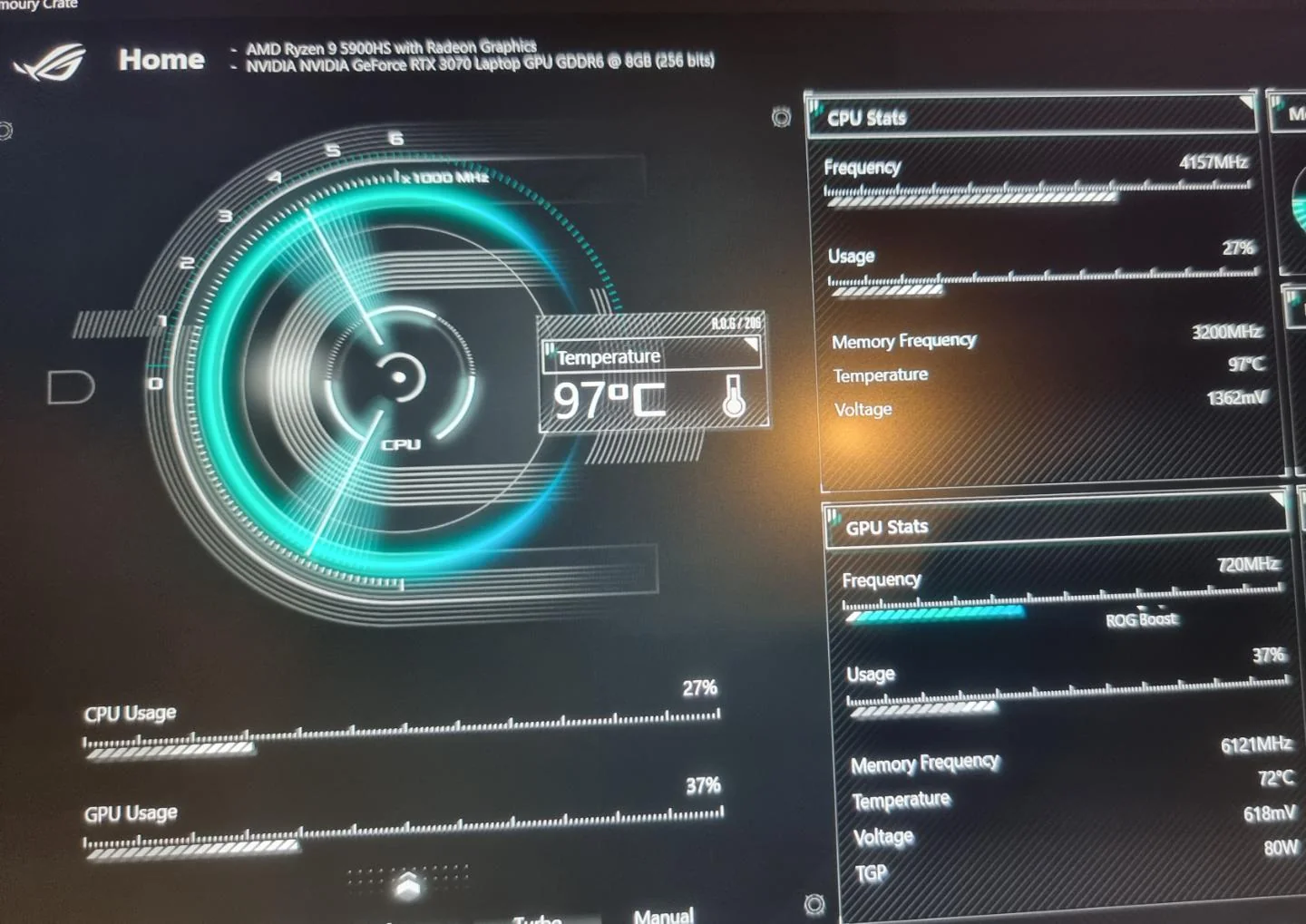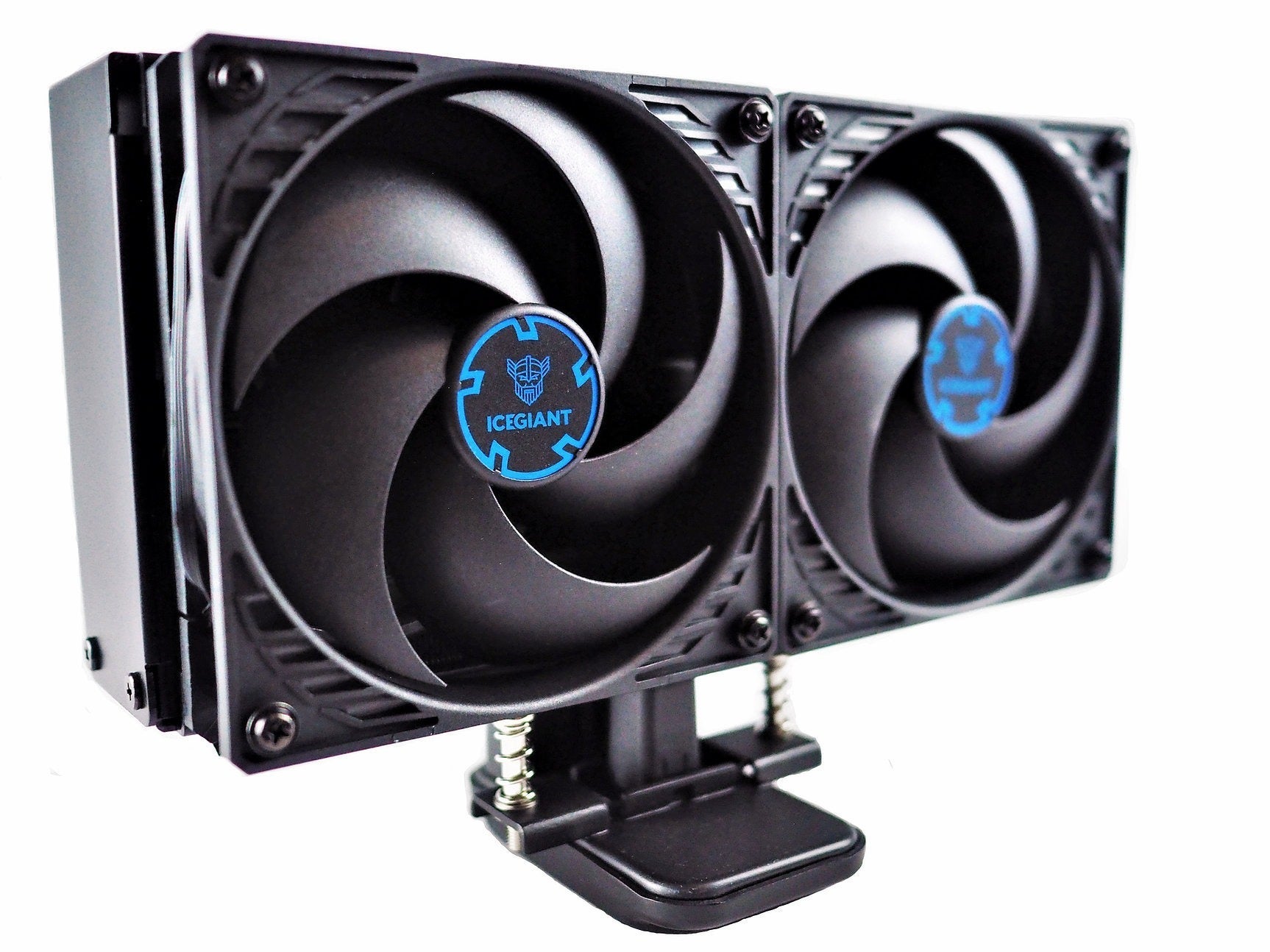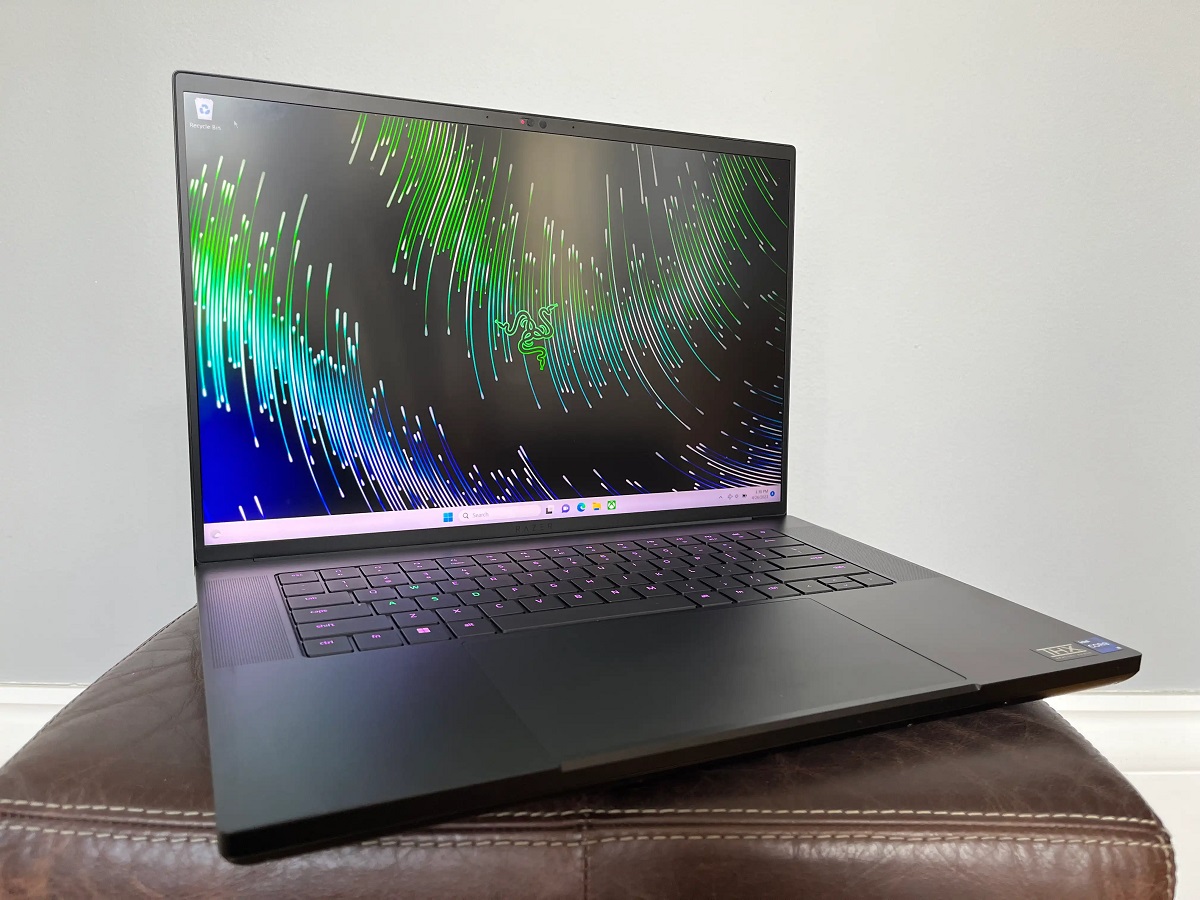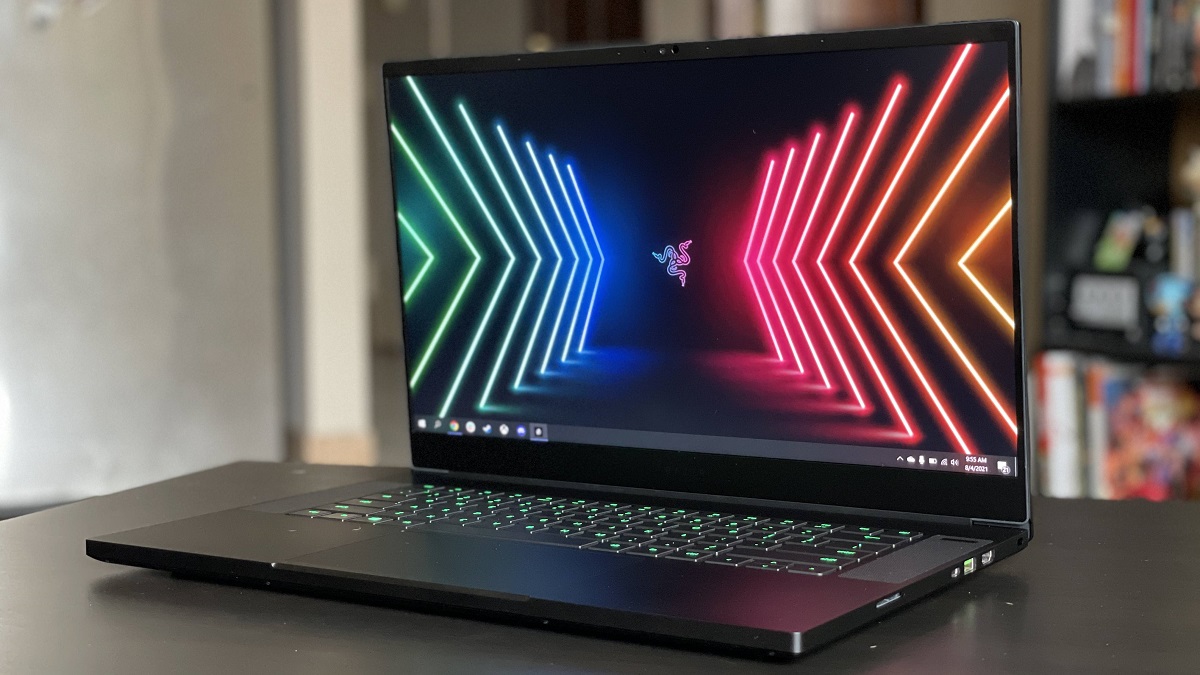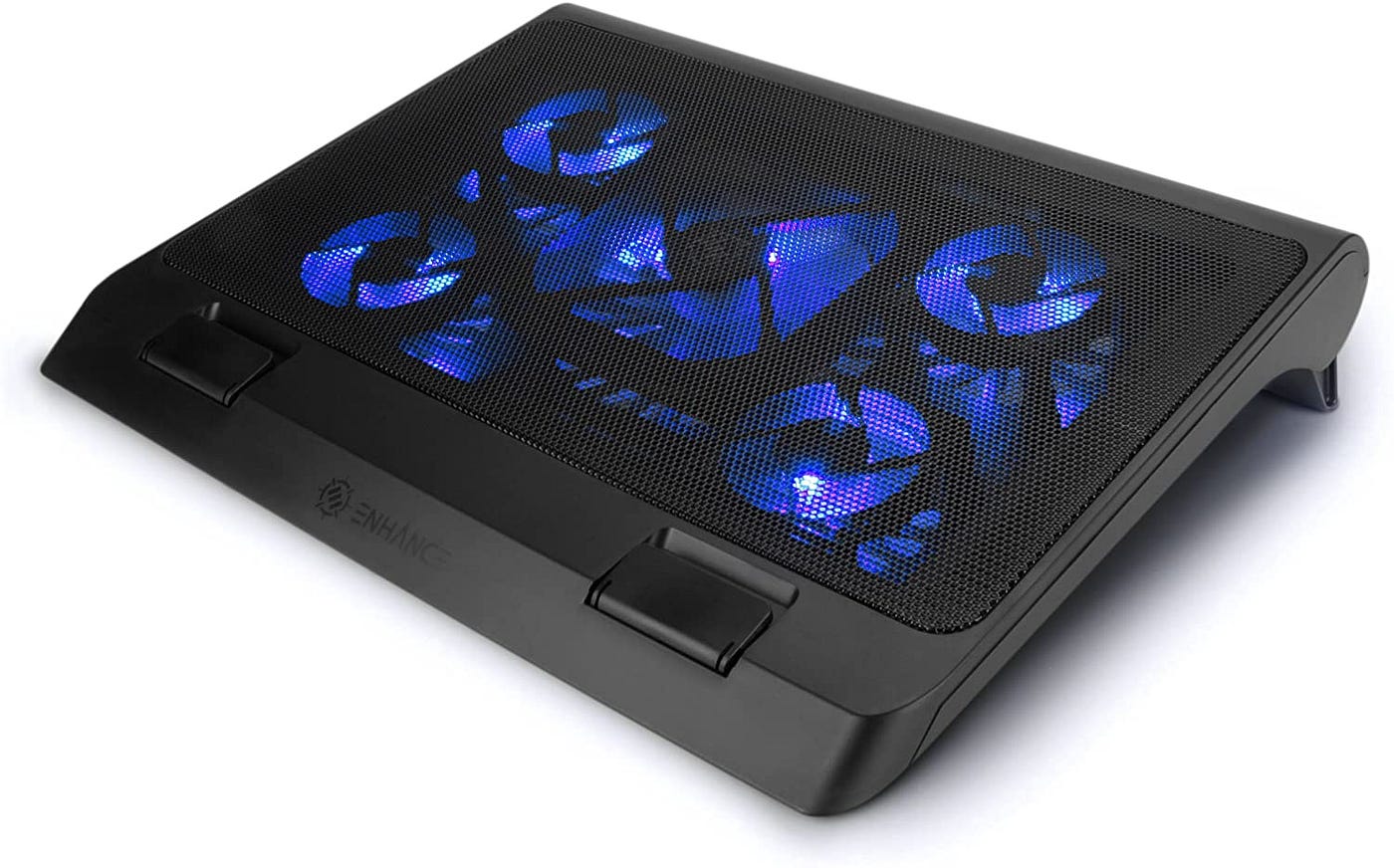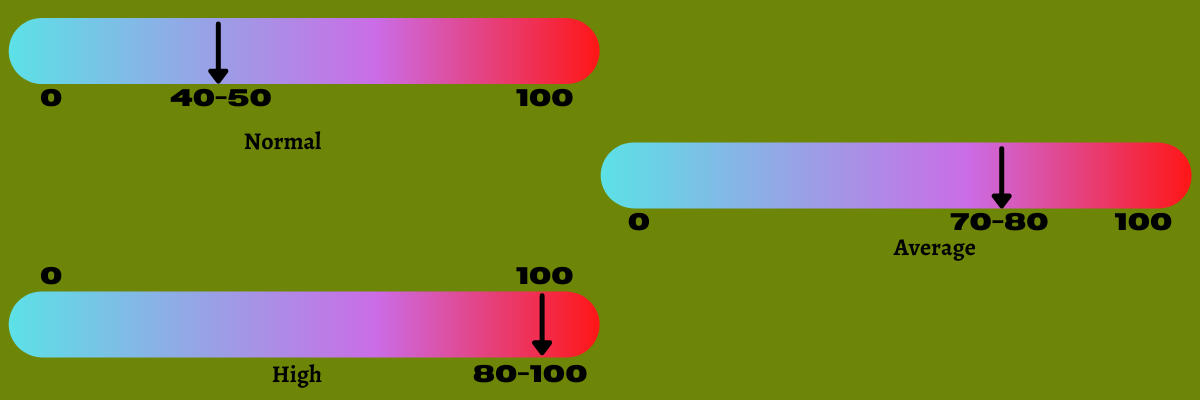Introduction
Welcome to the ever-evolving world of technology, where laptops have become an integral part of our lives. Whether it’s for work or entertainment, we rely on these portable devices to perform various tasks efficiently. But have you ever wondered how hot your laptop’s CPU gets while handling all those demanding processes?
CPU temperature is a crucial factor to consider when it comes to the performance and longevity of your laptop. As the central processing unit (CPU) is responsible for executing all the instructions and calculations, it naturally generates heat. The question is, how hot is too hot?
In this article, we will explore the importance of monitoring CPU temperature, the ideal temperature range, and the potential dangers of an overheated CPU. We will also provide tips on how to keep your laptop CPU cool for optimal performance and longevity.
Understanding CPU temperature and how it impacts your laptop’s performance is essential, especially if you are a heavy user who regularly engages in resource-intensive tasks like gaming, video editing, or running complex software applications.
So, let’s dive into the world of CPU temperature and uncover its significance in ensuring the smooth functioning of your laptop!
What is CPU temperature?
CPU temperature refers to the level of heat generated by the central processing unit (CPU) of your laptop. The CPU is like the brain of your computer, responsible for executing all the instructions and calculations that enable the various tasks you perform. As the CPU performs these operations, it naturally generates heat as a byproduct of its electrical activity.
The temperature of your CPU can have a significant impact on the performance and lifespan of your laptop. If the CPU gets too hot, it can cause instability, performance throttling, and even permanent damage to the processor and other components.
CPU temperature is usually measured in degrees Celsius (°C) or Fahrenheit (°F) and can vary depending on factors such as the CPU model, workload, cooling system, and ambient temperature of the environment in which your laptop is used.
Monitoring the CPU temperature is crucial in ensuring that it stays within safe limits. Excessive heat can lead to thermal throttling, where the CPU automatically reduces its frequency to prevent overheating. This can result in a noticeable drop in performance, causing your laptop to lag or freeze during tasks.
On the other hand, maintaining an optimal temperature range allows the CPU to operate efficiently, ensuring smooth performance without risking any long-term damage.
It’s important to note that while CPUs are designed to handle high temperatures, sustained overheating can cause accelerated wear and tear, reducing the lifespan of the processor and potentially causing irreversible damage.
Now that we understand what CPU temperature is and why it’s important, let’s explore the ideal temperature range for your laptop’s CPU in the next section.
Why does CPU temperature matter?
The temperature of your laptop’s CPU is more than just a number – it plays a vital role in the overall performance and longevity of your device. Here’s why CPU temperature matters:
1. Performance: Heat is the enemy of electronic components, and your CPU is no exception. As the temperature rises, the performance of your CPU can be negatively affected. When a CPU gets too hot, it may start to throttle its speed to cool down, resulting in decreased performance during tasks that require high processing power. This can lead to frustratingly slow performance and hinder your ability to multitask efficiently.
2. Stability: Overheating can cause your laptop to become unstable. When the CPU temperature exceeds safe limits, it can lead to system crashes, unexpected shutdowns, or the infamous “blue screen of death.” These issues not only disrupt your workflow but also risk data loss if your laptop crashes while you’re working on an important task.
3. Longevity: Excessive heat can significantly shorten the lifespan of your laptop’s CPU. Continuous exposure to high temperatures can cause the internal components to degrade faster and may even lead to complete CPU failure. By keeping your CPU temperature within optimal range, you can ensure that your laptop lasts longer and avoids the costly need for a premature replacement.
4. Energy Efficiency: Overheating CPUs consume more power, contributing to higher energy consumption and reduced battery life. By monitoring and managing the CPU temperature, you can optimize your laptop’s energy efficiency, allowing for longer battery life and reduced electricity usage, particularly when running resource-intensive tasks.
5. Component Health: It’s not just the CPU that is affected by high temperatures. Overheating can also impact other vital components such as the motherboard, graphics card, and RAM. By controlling the CPU temperature, you help maintain the overall health and performance of your laptop’s internal components.
Now that we’ve established why CPU temperature matters, let’s explore the ideal temperature range for your laptop’s CPU in the next section.
What are the ideal CPU temperatures?
The ideal CPU temperatures for laptops can vary depending on the specific CPU model and the manufacturer’s recommendations. However, as a general guideline, most laptop CPUs operate optimally within a temperature range of 40 to 70 degrees Celsius (104 to 158 degrees Fahrenheit).
For light tasks such as web browsing, email, and word processing, it is normal for the CPU temperature to stay in the lower end of the range. As the workload increases, such as when gaming or running demanding software applications, the temperature may rise towards the upper end of the range.
It’s important to note that these temperature ranges are not strict boundaries, but rather guidelines to ensure optimal performance and longevity. Modern CPUs are designed to handle higher temperatures, and occasional spikes above the ideal range are typically not a cause for concern as long as they are brief and return to normal levels.
Furthermore, some CPUs may have specific temperature targets or control mechanisms implemented by the manufacturer. This means that the CPU will automatically adjust its performance or fan speed to maintain a specific temperature threshold for optimal operation.
It is recommended to consult your laptop’s user manual or the manufacturer’s website for specific temperature recommendations for your CPU model. Different CPUs and laptop configurations may have different temperature tolerances, and it’s always best to adhere to the manufacturer’s guidelines.
Monitoring your CPU temperature using software tools can help you keep an eye on the temperature levels and ensure they remain within the ideal range. In the next section, we will explore how you can easily monitor your laptop’s CPU temperature.
How hot is too hot?
While most CPUs can handle higher temperatures without immediate damage, sustained high temperatures can have negative consequences on performance and the lifespan of your laptop’s CPU. So, how hot is too hot for your CPU?
As a general rule of thumb, if your CPU consistently reaches temperatures above 90 degrees Celsius (194 degrees Fahrenheit), it’s an indication that the CPU is running too hot. At this temperature, the risk of thermal throttling, instability, and potential damage to the CPU and other components increases significantly.
However, it’s important to note that different CPUs have different temperature tolerances. Some CPUs can handle higher temperatures without adverse effects, while others may have lower thermal thresholds.
In addition to the absolute temperature, the duration of exposure to high temperatures is also a crucial factor. Sustained temperatures above the recommended range can lead to accelerated wear and tear, reducing the lifespan of the CPU over time.
It’s worth noting that ambient temperature also plays a role in CPU temperature. If you’re using your laptop in a particularly hot environment or without adequate ventilation, the overall temperature of your laptop can rise, leading to higher CPU temperatures. Therefore, it’s essential to consider the surrounding conditions and take necessary steps to keep your laptop cool.
Regularly monitoring your laptop’s CPU temperature using software tools can help you identify and address any potential issues. If you consistently experience CPU temperatures nearing or exceeding the upper limits, it’s recommended to take proactive measures to prevent overheating and maintain the longevity and performance of your laptop’s CPU.
In the next section, we will explore the factors that can affect CPU temperature to help you understand why your CPU may be running hot.
What factors can affect CPU temperature?
Several factors can contribute to fluctuations in CPU temperature. Understanding these factors can help you identify the potential causes of high CPU temperatures and take appropriate measures to keep your laptop running cool. Here are some key factors that can affect CPU temperature:
1. Workload: The intensity of the tasks you are performing on your laptop can significantly impact CPU temperature. Running resource-intensive applications such as video editing software, 3D rendering programs, or demanding games can put a heavy load on the CPU, causing it to generate more heat.
2. Cooling System: The efficiency of your laptop’s cooling system plays a crucial role in regulating CPU temperature. If the cooling system is inadequate or faulty, it may struggle to dissipate heat effectively, leading to higher CPU temperatures. Factors such as the number and quality of cooling fans, heat sinks, and thermal paste application can affect cooling system performance.
3. Dust and Dirt: Over time, dust and dirt can accumulate on the cooling components, hindering airflow and heat dissipation. This can cause the CPU temperature to rise. Regular cleaning of the cooling system, including the fans and heat sinks, is essential to maintain proper airflow and prevent overheating.
4. Ambient Temperature: The temperature of the environment in which you are using your laptop can impact CPU temperature. If you are operating your laptop in a hot or poorly ventilated room, the overall temperature inside the laptop can increase, leading to higher CPU temperatures. It is advisable to use your laptop in a well-ventilated area or consider using additional cooling solutions such as laptop cooling pads.
5. Overclocking: Overclocking refers to increasing the clock speed of your CPU beyond its rated specifications. While overclocking can provide a performance boost, it also results in increased heat generation. This can push the CPU temperature to higher levels and may require enhanced cooling solutions to maintain stability and prevent damage.
6. Power Settings: Some laptops have power management settings that can affect CPU performance and temperature. High-performance power settings, for example, may prioritize maximum performance at the cost of higher CPU temperatures. Adjusting your laptop’s power settings to a balanced or power-saving mode can help reduce CPU temperature during less demanding tasks.
By considering these factors and addressing any potential issues, such as cleaning the cooling system, optimizing power settings, or adjusting the workload, you can effectively manage and control your laptop’s CPU temperature.
In the next section, we will explore how you can monitor your CPU temperature and ensure it stays within safe limits.
How can you monitor CPU temperature?
Monitoring your laptop’s CPU temperature is essential in maintaining optimal performance and preventing overheating. Fortunately, there are several methods available to monitor CPU temperature effectively. Here are some ways to keep an eye on your CPU temperature:
1. Software Monitoring Tools: There are various third-party software programs available that allow you to monitor CPU temperature. These tools provide real-time temperature readings, as well as additional information such as fan speed and system voltage. Popular CPU monitoring software includes CPU-Z, HWMonitor, Core Temp, and SpeedFan. These programs usually display temperature readings in a user-friendly interface and can help you identify any abnormal temperature spikes or trends.
2. BIOS/UEFI: The Basic Input/Output System (BIOS) or Unified Extensible Firmware Interface (UEFI) of your laptop may include features that allow you to monitor CPU temperature. Accessing the BIOS/UEFI settings during the boot process can provide you with essential information such as CPU temperature, fan speed, and voltage levels. Consult your laptop’s user manual or manufacturer’s website for instructions on how to access and navigate the BIOS/UEFI settings.
3. Manufacturer’s Software: Some laptop manufacturers provide their own software utilities that allow you to monitor various system parameters, including CPU temperature. These utilities are often pre-installed on the laptop or available for download from the manufacturer’s website. Examples include ASUS AI Suite, MSI Dragon Center, and Dell Command Center. Checking your laptop’s support page or contacting the manufacturer can provide guidance on which software is available for your specific model.
4. Gadgets and Widgets: If you prefer to have a visual representation of your CPU temperature directly on your desktop, you can use gadgets or widgets. These small applications are often customizable and can be placed on your desktop to provide real-time CPU temperature readings. Windows users can utilize tools like Rainmeter, while Mac users can take advantage of widgets found in the Notification Center.
Remember to keep the CPU temperature monitoring tool running in the background while using your laptop, especially during resource-intensive tasks or extended periods of usage. Regularly checking the temperature readings can help you detect any temperature anomalies and take necessary action to prevent overheating.
Now that you know the various methods to monitor your CPU temperature, let’s move on to the next section, where we will provide you with tips to keep your laptop’s CPU cool.
Tips for keeping your laptop CPU cool
Keeping your laptop’s CPU cool is essential for maintaining optimal performance and preventing overheating. Here are some effective tips to help you keep your laptop’s CPU temperature in check:
1. Use a Laptop Cooling Pad: Investing in a laptop cooling pad can significantly improve airflow and heat dissipation. These pads come with built-in fans that help cool down your laptop by providing additional ventilation from the bottom.
2. Keep Your Laptop on a Hard Surface: Placing your laptop on a hard, flat surface can promote better airflow and prevent overheating. Avoid using your laptop on surfaces such as beds, carpets, or sofas, as they can obstruct ventilation and lead to temperature build-up.
3. Clean the Cooling System Regularly: Over time, dust and debris can accumulate in the cooling system, hindering airflow and causing the CPU temperature to rise. Regularly clean the air vents, cooling fans, and heat sinks using compressed air or a soft brush to remove any build-up of dust and maintain optimal cooling efficiency.
4. Optimize Power Settings: Adjusting your laptop’s power settings can help reduce CPU temperature. Set your power plan to balanced mode or use power-saving settings during less demanding tasks to lower the CPU’s energy consumption and heat generation.
5. Avoid Blocking the Air Vents: Ensure that the air vents on your laptop are not obstructed by objects like papers, books, or your hands. Blocking the vents restricts airflow and can cause the CPU temperature to rise.
6. Limit Background Processes: Running multiple background processes and applications can put unnecessary strain on your CPU, leading to increased heat generation. Close any unnecessary programs and keep the number of running processes to a minimum to reduce CPU workload and temperature.
7. Update Drivers and BIOS: Keeping your laptop’s drivers and BIOS up to date can help optimize performance and address any known issues related to CPU temperature management. Check the manufacturer’s website for the latest driver and BIOS updates for your specific laptop model.
8. Avoid Overclocking: Overclocking your CPU can increase heat generation and put additional strain on the cooling system. Unless you have proper cooling measures in place, it’s best to avoid overclocking to keep your CPU temperature within safe limits.
By implementing these tips, you can effectively manage and reduce your laptop’s CPU temperature, ensuring optimal performance and prolonging the lifespan of your device.
In the next section, we will explore the potential dangers of an overheated CPU and why it’s crucial to take proactive measures to prevent overheating.
What are the dangers of overheating?
Allowing your laptop’s CPU to overheat can have serious consequences for both the performance and longevity of your device. Here are some of the potential dangers of an overheated CPU:
1. Reduced Performance: One of the immediate effects of an overheated CPU is a drop in performance. When the CPU reaches high temperatures, it can initiate thermal throttling, a technique used to reduce the CPU’s speed and heat generation. This throttling results in decreased performance, causing your laptop to run slower and lag during tasks that require high processing power.
2. System Instability: Overheating can lead to system instability, causing frequent crashes, freezes, or unexpected shutdowns. These issues can disrupt your work, cause data loss, and potentially damage files or storage devices if the system crashes during critical operations.
3. Permanent Component Damage: Thermal stress on the CPU and other internal components can lead to permanent damage. Prolonged exposure to high temperatures can cause solder joints to weaken, capacitors to bulge or leak, and other components to deteriorate. This damage may result in system failures and require costly repairs or component replacements.
4. Reduced Lifespan: Continuous exposure to high temperatures can significantly reduce the lifespan of your laptop’s CPU. Overheating accelerates the degradation of internal components, shortening their operational lifespan. This reduces the overall longevity of your laptop, necessitating premature replacements or costly repairs.
5. Increased Energy Consumption: Overheating CPUs consume more power, contributing to increased energy consumption and reduced battery life. When the CPU runs hot, the cooling system works harder, consuming additional power and draining the battery faster. This can limit the portability of your laptop when you need it to operate on battery power for extended periods.
6. Potential Fire Hazard: In extreme cases, when temperatures exceed safety limits, there is a risk of fire. While these instances are rare, they highlight the importance of addressing and preventing CPU overheating to ensure the safety of you and your laptop.
7. Damage to Other Internal Components: Overheating can also affect other critical components in your laptop, such as the motherboard, graphics card, and RAM modules. Excessive heat can impact the stability and performance of these components, leading to system malfunctions and potential failures.
Given the potential dangers of an overheated CPU, it is crucial to take proactive measures to prevent overheating and maintain the health and performance of your laptop. In the next section, we will conclude our discussion and summarize the importance of managing CPU temperature.
Conclusion
Monitoring and managing your laptop’s CPU temperature is essential for optimizing performance, preventing overheating, and prolonging the lifespan of your device. By understanding the importance of CPU temperature and implementing the tips mentioned in this article, you can effectively keep your laptop’s CPU cool and maintain its optimal functioning.
We explored what CPU temperature is and why it matters, emphasizing the impact of temperature on performance, stability, and component health. We discussed the ideal CPU temperature range and the risks of allowing the CPU to get too hot.
Factors such as workload, cooling system efficiency, ambient temperature, and proper maintenance can significantly affect CPU temperature. It’s crucial to be aware of these factors and take appropriate measures to manage CPU temperature effectively.
We provided tips for keeping your laptop’s CPU cool, including using a cooling pad, keeping the laptop on a hard surface, cleaning the cooling system, optimizing power settings, and avoiding overclocking. These tips can help you maintain a safe and optimal temperature for your CPU.
Additionally, we highlighted the dangers of overheating, including reduced performance, system instability, permanent component damage, reduced lifespan, increased energy consumption, and potential fire hazards. It is vital to be aware of these dangers and take preventive actions to avoid them.
In conclusion, keeping your laptop’s CPU temperature under control is crucial for ensuring smooth performance, preventing system issues, and prolonging the lifespan of your device. By implementing the tips mentioned here, regularly monitoring CPU temperature, and practicing proper maintenance, you can mitigate the risks of overheating and enjoy the full potential of your laptop.







